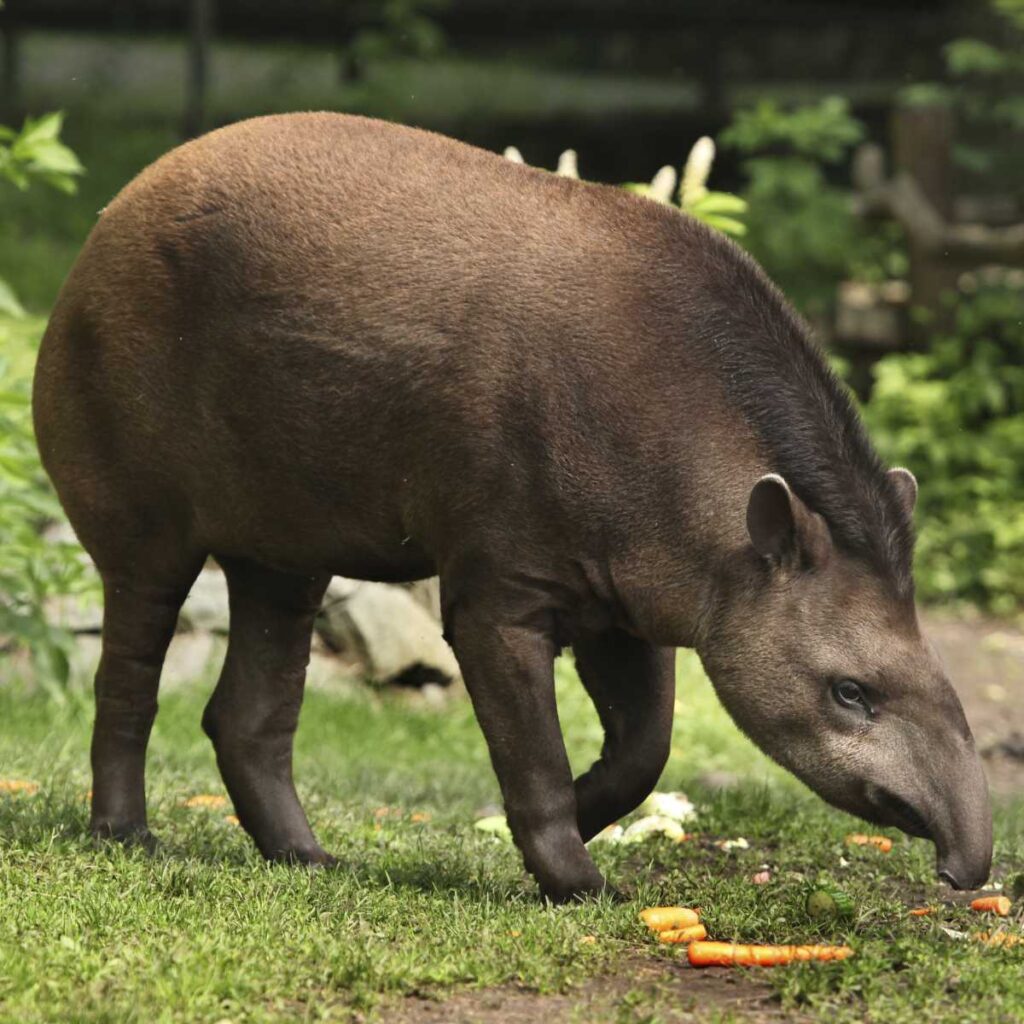Last Reviewed and Updated on July 26, 2022
Tapirs are the largest land mammals in North and South America. They may look a little like a mix of a hog and an elephant but aren’t closely related to either. Read through some of these amazing facts about tapirs, and learn more about these interesting animals.

1. There are 4 different species of tapir
Four living species of tapir are widely recognized. The species are the South American tapir, the Malayan tapir, Baird’s tapir, and the mountain tapir.
A potential fifth species, the kabomani tapir, was discovered in 2013; however, the kabomani tapir is most likely a part of the South American tapir species and not a distinct species.
2. They can move their nose in all directions
Their nose is a highly flexible organ. Tapirs are able to move their noses in all directions.
3. Malayan Tapirs have the longest snout of all tapir species
All tapir species have elongated snouts, with the Malayan tapir having the longest one.
4. They love water and swimming
Not all tapirs have access to rivers, but when they do, they will spend most of the time in and under the water. They will swim, walk along the riverbeds and sink to the bottom of rivers to feed and cool down. This also keeps them fairly safe from many predators.
5. Baby tapirs have spots and stripes
What has to be one of the most adorable facts about tapirs is the coat coloration of their young. Adult tapirs are mostly dark brown or, in the case of Malayan tapirs, black and gray. But the juvenile tapirs have brown coats with white stripes and white spots. This coat color and pattern serve a camouflage purpose, keeping the young hidden from predators. They will lose their stripes and spots in about five to six months.
6. Malayan tapirs are half black and half lighter colored
The Malayan tapir is easily distinguished from other tapirs as it has a lightly colored patch of coat extending from its shoulders to its hindquarters. Other parts are covered in black hair. This coloration serves as camouflage, breaking the outline of the animal – basically making them appear as rocks to predators.

7. Their closest relatives are rhinos
Their closest relatives are rhinoceroses, donkeys, zebras, and horses.
8. Tapirs can grab things with their snout
Their flexible snouts allow them to grab foliage as well as other things.
9. They don’t have many predators
Their predators are large cats and crocodiles. However, adult tapirs can deter them. They have a pretty tough hide, which makes it hard for their predators to subdue them. Tapirs will also snap and bite to deter their predators.
The camouflage pattern of the young also keeps them pretty safe.
10. Tapirs are pretty fast
These animals are fast and agile both on land and in the water.
